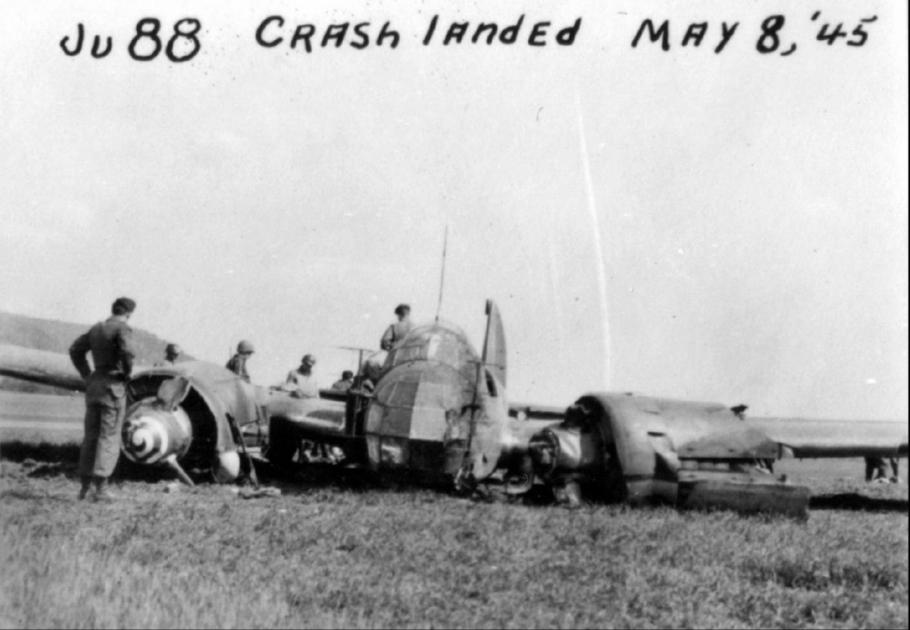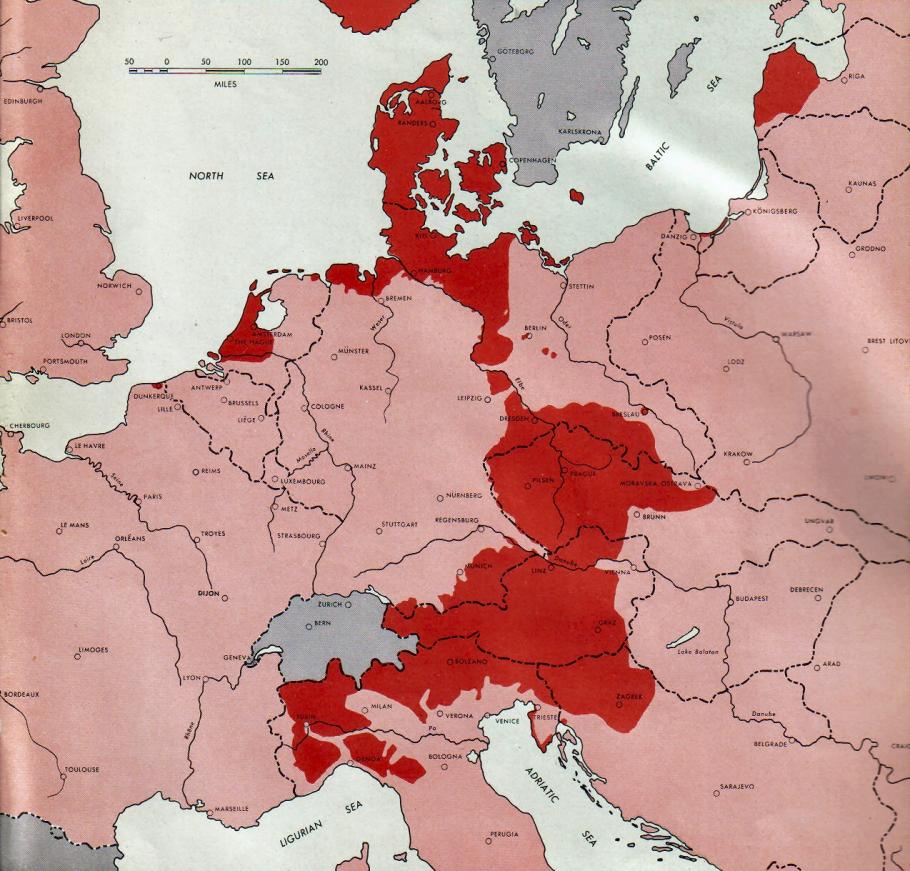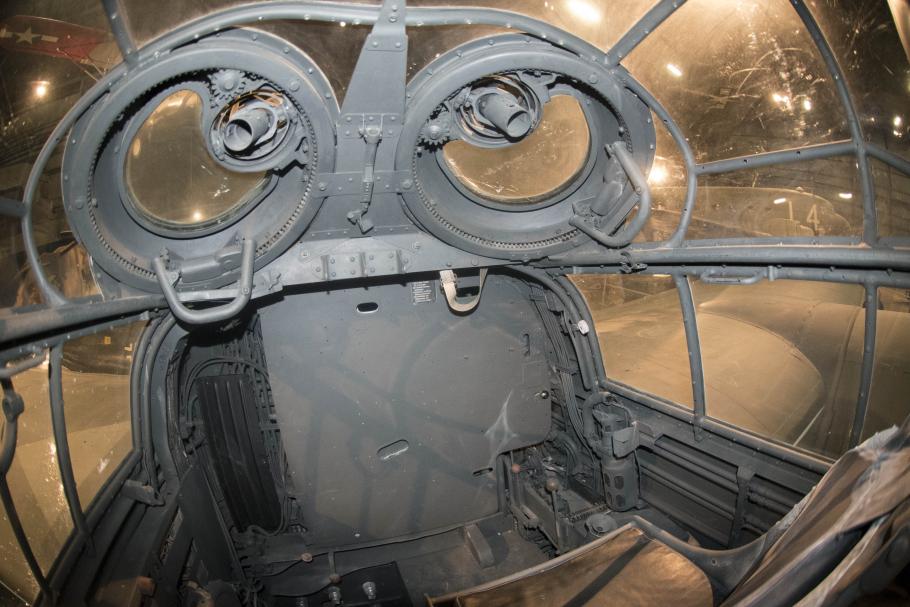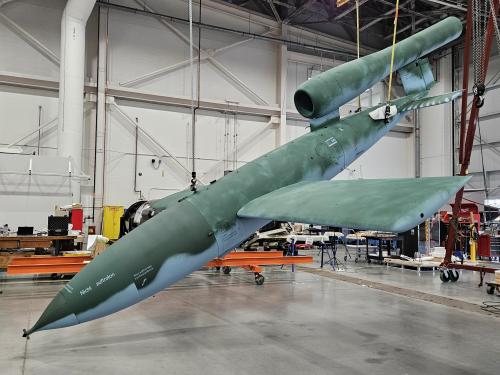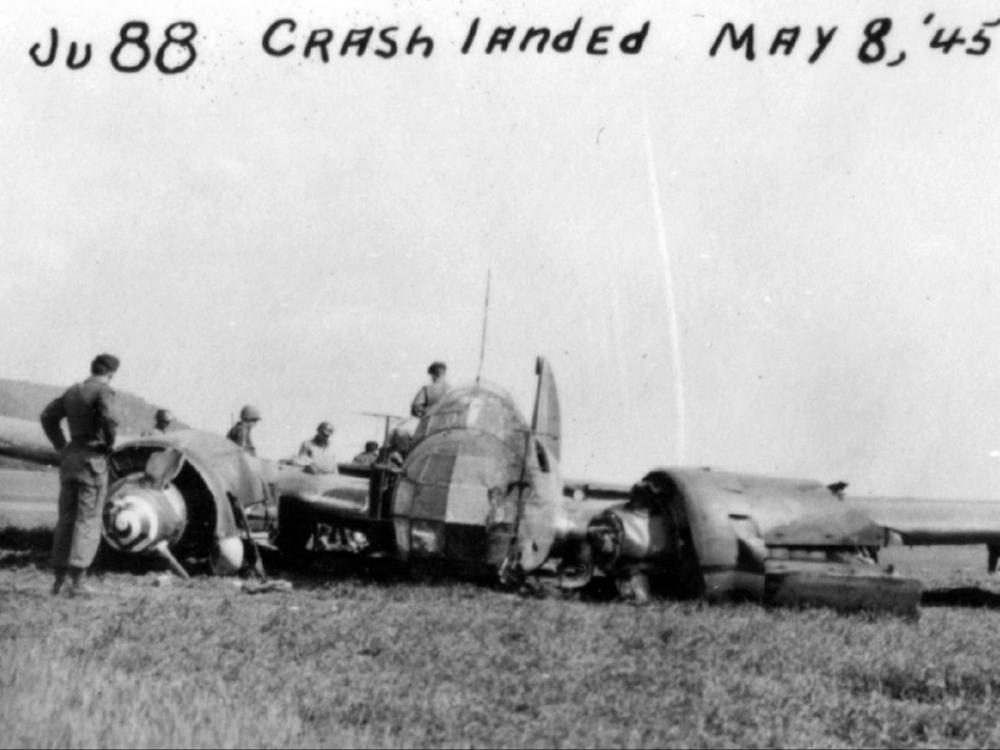
Last American Aerial Victory in Europe
May 08, 2020
On May 8, 1945, VE Day, Germany surrendered, ending nearly six years of Nazi tyranny over Europe. The National Air and Space Museum has a unique artifact in our collection related to that day in history — a machine gun that was carried by a German aircraft that was claimed to be the last enemy aircraft shot down by U.S. forces in Europe before the end of the war.
The MG 81 belt fed 7.92 mm machine gun was used mainly as defensive armament on Luftwaffe aircraft such as the Ju 88. This gun came from the last aircraft claimed shot down by U.S. forces in Europe.
In May 1945 the U.S. 204th AAA (Anti-Aircraft Artillery) Battalion was stationed about 25 miles southeast of Kassel, Germany, protecting airfield R-11 at Eschwege. The 204th belonged to the IXth Air Defense Command, whose job was to protect vital ports, cities, airfields, supply bases, and lines of communication behind the field armies from the French beaches to Germany. Around 2:37 pm that afternoon, the 204th's gunners saw a German aircraft flying low towards their positions near the airfield. Batteries C and D began firing at the aircraft with their M-51 electrically driven turret-mounted antiaircraft guns. The German aircraft, a Junkers Ju 88, descended and belly landed in a field between low hills. The aircraft crash-landed with propellers still turning, shedding the blades, but beyond the left engine breaking free from the wing, the aircraft seemed to have suffered little damage. The one thing that stood out was that the crew had jettisoned the cockpit canopy before hitting the ground. As U.S. soldiers approached, they found to their surprise that the aircraft held not only a reduced crew of two, but also approximately ten “passengers.”
Junkers Ju 88 that crash landed at Eschwege, Germany on May 8, 1945. Note the long-range search radar antenna protruding from the nose of this reconnaissance variant. (Unknown credit)
By May 1945 Nazi Germany was in collapse. With the Allies pressing in from all sides, Hitler had committed suicide. In the east, the Soviet army had pushed into German territory, but in the rush to defeat the enemy, the Soviets had bypassed pockets of resistance. One of these pockets was in the Courland region of western Latvia. Ordered to hold the area with their backs to the Baltic Sea, some 200,000 German and Latvian soldiers, sailors, and airmen were trapped by the Red Army. Despite a blockade by the Soviet Baltic Fleet, the Germans had attempted several evacuations by sea. With surrender announced for May 8, the Luftwaffe made a last attempt to fly into the Courland pocket to rescue Germans from Soviet capture.
Early that morning, at their base in Vaernes, Norway, several aircraft, including the Ju 88 that would crash at Eshwege, readied for the flight. After flying over the Baltic, the Ju 88 landed at Cirava airfield in the Courland Pocket and picked up wounded soldiers. Taking off again, they flew west to reach land held by either Germans or by the western Allied armies. Running low on fuel, the Ju 88 had just left Soviet-controlled territory when the pilot spotted the airfield at Eschwege. Having no pre-arranged signal to show the aircraft’s intentions, the defenders fired on the perceived threat. Following the established procedure for a belly landing, the crew jettisoned the canopy, since the regular access to the cockpit under the fuselage would be blocked. Once U.S. personnel arrived on the scene, a hole was cut in the side of the aircraft to reveal the passengers in the bomb bay and rear fuselage who were now trapped by the blocked underside. The downing of this desperate flight was claimed as the last U.S. air victory in Europe before hostilities officially ended an hour before midnight.
One of the rear-firing MG 81 machine guns and its mount were retrieved from the jettisoned canopy as a souvenir. In 1947, IXth Air Defense Command had been inactivated and was nearing disbanding when its commander, General William Richardson, donated these artifacts to the Museum. They now provide us with a tangible link to events 75 years ago and the end of that terrible war.
This mount was retrieved with the machine gun from the Ju 88 that crashed at Eschwege on May 8, 1945
Christopher T. Moore is a museum specialist in the Museum’s aeronautics department and is responsible for aircraft armament, among other collections.
Related Topics
You may also like
We rely on the generous support of donors, sponsors, members, and other benefactors to share the history and impact of aviation and spaceflight, educate the public, and inspire future generations. With your help, we can continue to preserve and safeguard the world’s most comprehensive collection of artifacts representing the great achievements of flight and space exploration.

